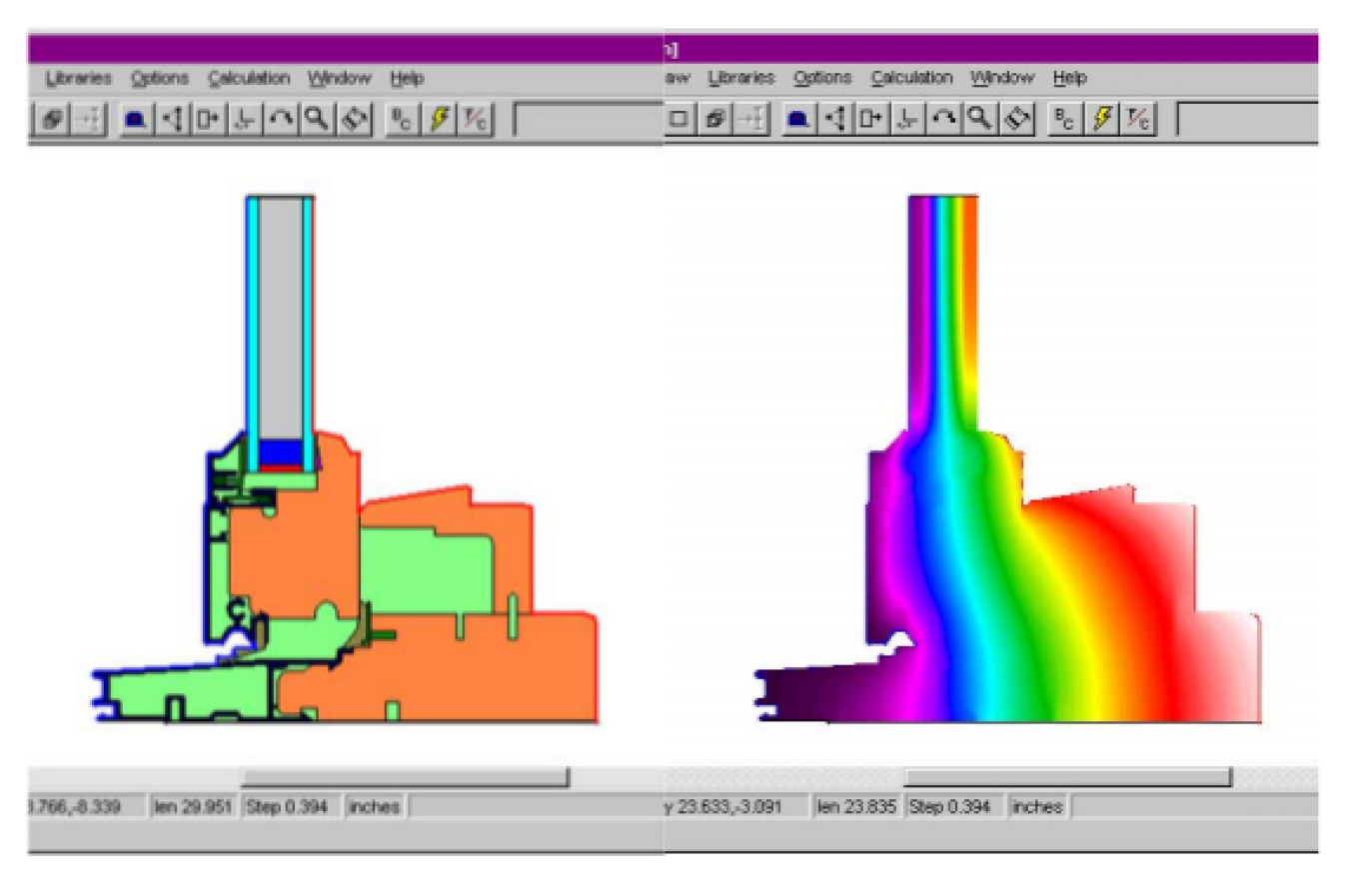
LBNL and ORNL researchers will add moisture modeling capabilities to the popular 2D building envelope heat transfer modeling software THERM. New THERM will support the analysis and of tight, energy-efficient envelopes that avoid moisture-related problems.
Performers:
Lawrence Berkeley National Lab – Berkeley, CA
Oak Ridge National Lab – Oak Ridge, TN
DOE Total Funding: $1,250,000
Cost Share: $250,000 from California Energy Commission
Project Term: October 1, 2016 - September 30, 2019
Funding Type: Building Energy Efficiency Frontiers and Innovations Technologies (BENEFIT) – 2016 (DE-FOA-0001383)
Related Projects: Windows and Envelope Modeling Tools
Project Objective
Heat and moisture transfer are important and interrelated aspects of building envelope performance and building energy efficiency. The significance of heat transfer is obvious, but the impact of moisture is less intuitive. Moisture changes the thermal resistances and capacitances of materials. In turn, thermal gradients drive moisture movement. Moisture characterization is important because moisture collection degrades envelope structural and thermal properties via rust, rot, cracking, etc., and invites mold. As envelopes become tighter and better insulated, the ability to evict moisture decreases, making moisture analysis and moisture aware design more important.
Previously, 2D envelope heat and moisture transfer are modeled separately, or using expensive and non-intuitive software tools. This project will integrate these analyses into one modeling system by adding moisture transfer to Lawrence Berkeley National Lab’s THERM, a popular 2D envelope heat-transfer software tool with a large and active user community. Lawrence Berkeley National Lab will work in partnership with Oak Ridge National Lab on the project.
The new tool will help building professionals evaluate and design energy-efficient facades that mitigate moisture problems, avoiding structural degradation and mold.
Project Impact
Building envelopes represent approximately 8 quads of energy use in residential and commercial buildings; a 5% improvement in envelope efficiency would save 0.4 quads of energy annually. This project will support the use of energy efficiency facades by helping engineers identify designs that both reduce thermal losses and mitigate moisture and mold problems.
Contacts
DOE Technology Managers: Marc LaFrance and Amir Roth
Principal Investigator: Charlie Curcija, LBNL
